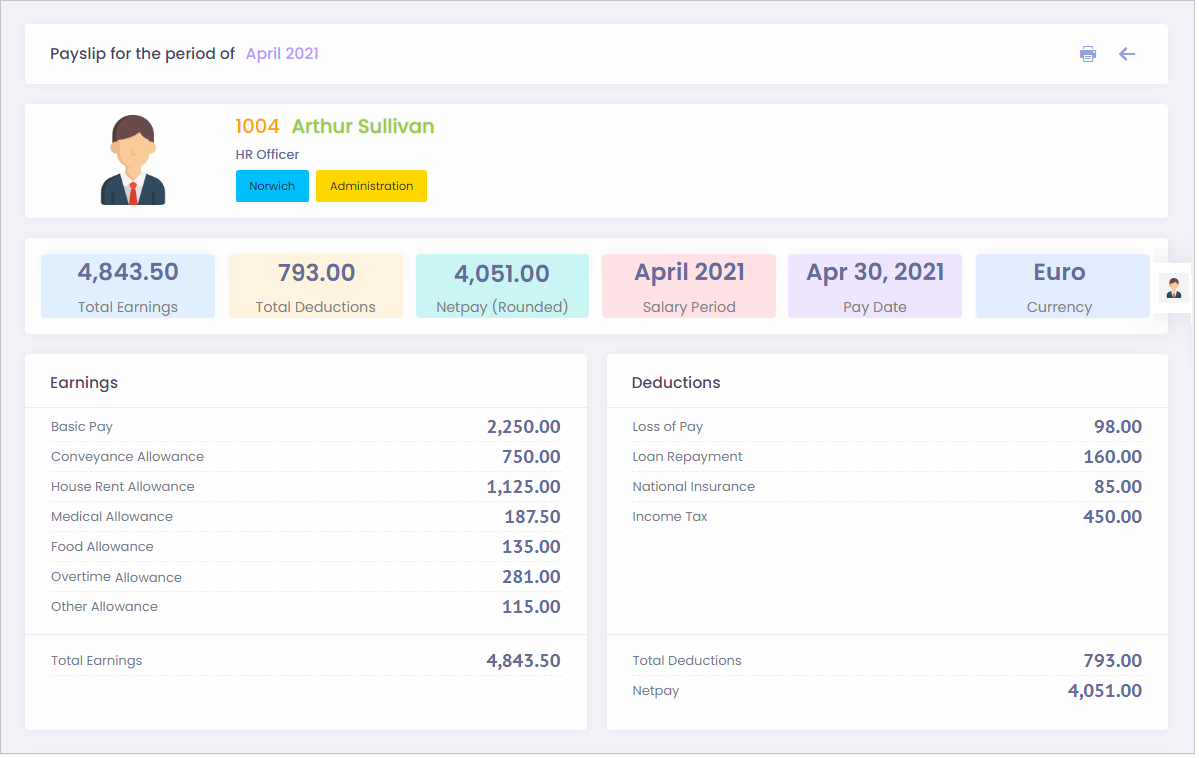A salary slip is an official document issued by an employer to an employee. It contains a detailed description of the employee’s salary components. Earnings like Basic Pay, Transport Allowance, HRA, Leave Travel Allowance, Bonus, Overtime Pay etc and deductions like Income Tax, Loss of Pay, Provident Fund, Insurance etc of a specified time period for which your salary period is defined, usually a month. It may be issued on paper or mailed to the employee or maybe even published online or locally through Employee Self Service. Employers are legally bound to issue salary slips to their employees periodically, as proof of salary payments to employees and deductions made.
Components of Salary Slip
Earnings
Major components in payslip are Earnings, Deductions and Net Pay. A component is Earnings. It carries details about your earnings for any particular time period. Some get a salary slip every month, others every fortnight and many, every week. Earnings are income earned by the employee for the work done during the salary period. Income earned include Basic Pay, Transport Allowance, House Rent Allowance, Overtime etc. The following are a few components that usually appear under the earnings/incomes part of the salary slip:
Deductions
Deductions in the salary slip of an employee depend primarily on the company policy and the statutes in the state or country where the employee works. Statutory deductons are what the government or law of the state demands to be remitted from each payslip of the employee. It maybe for the pension fund of employee or insurance etc. Company policies bring in certain deductions like the loss of pay, late-in penalty etc. The following are a few components that usually appear under the deductions part of the salary slip:
Net Pay
The Net Pay is your take home salary after factoring in taxes and other deductions as applicable. It is obtained after deducting income tax at source (TDS) and other deductions as per the relevant company policy.


Leave A Comment
You must be logged in to post a comment.